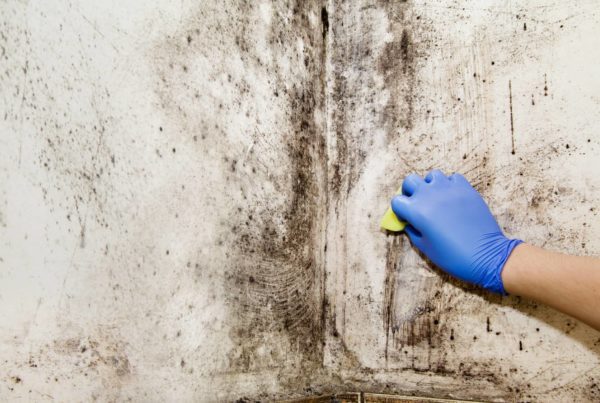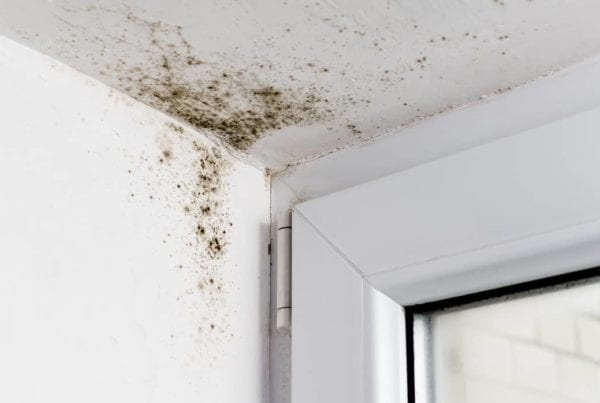
If you are looking into purchasing a home you might have a concern about mold inside the home. This concern is totally understandable. In this article we are going to cover how mold grows inside your home, when you should be concerned, and answer should you get a mold inspection when buying a home.
How Mold Grows Inside Your Home
It is important to know that mold is in every home. While the presence of mold is not harmful, too much mold and certain kinds of mold can be detrimental to your health.
Therefore, whenever we are talking about mold inside of a home, we are assuming the mold is growing more than it would be in an exterior environment. This is not to discount that some people are more sensitive to mold growth than others and may require additional filtration within their home, more on that later though.
The Needs For Mold Growth
Mold needs a source of food and moisture to grow to a level of concern.
In almost all cases of elevated mold levels inside of a home, there is some type of roof leak, plumbing leak, or water intrusion issue.
Frequent occurrences we see as home inspectors are:
- Unmaintained roofs that have been leaking for a while
- Water intrusion through exterior walls
- Plumbing leaks that cannot be seen or have not been repaired
- Air handlers not functioning properly leaving a humid environment
This can happen when a home is left vacant, when the homeowner does not have money to complete repairs, or when the homeowner is unaware of an issue.
So, when you are looking at your future home, be on the lookout for those above items.
When Should You Be Concerned
It should raise a few internal flags if you encounter any of the following while visiting the home:
- Unmaintained home: overgrown vegetation, poor paint, damage to exterior siding, various roof repairs/damage
- A musty smell inside the home
- Roof leaks that have been leaking awhile
- Plumbing leaks that have been leaking awhile
- Water intrusion issues
- The air conditioning is not functioning properly
You can also check out our blogs about mold in the attic or near the air handler to see if those areas are of concern to you.
If you see any of the issues above, you should inquire about a mold inspection when you are purchasing a property.
How Home Inspectors Can Help
If you hire an experienced home inspector, in most cases, they can complete their home inspection and then tell you if they see any need to complete a mold inspection.
For instance, a home inspection might reveal a leak through the use of thermography.
Keep in mind, a home inspection is not a mold inspection. Most home inspectors will conduct a visual inspection for mold only with their home inspection.
You should have a mold inspection or mold testing completed when either the inspector finds a reason or you are concerned about mold.

Types of Mold Inspections
If you are in the need of a mold inspection, you should be aware of your options.
Indoor Air Quality Testing
Indoor air quality testing uses a special machine to capture air onto a cassette. Typically, these tests can be performed by a home inspector.
The home inspector should take a sample of the outside air as a control followed by several interior samples of the air for different rooms/areas of concern.
The samples are then shipped to a lab for review under a microscope where a technician can report on the actual amount of mold and type in the air in comparison to the outside air.
If the interior of the home has higher levels of mold or a mold type that is not found outside, then in most cases, you will need mold remediation.
How Much Does Indoor Air Quality Testing Cost?
Indoor air quality testing cost depends on the size of the home, the number of tests, and if a home inspector is completing the test with a home inspection too. On average you can expect to pay anywhere from $150-$350.
Mold Swabs
Mold samples are used when you can visually see mold and want to verify it is mold and find out the type.
Just like indoor air quality testing, home inspectors can typically complete this for you.
Their process is to simply swab the affected area and send in the sample to a lab for review/analysis.
How Much Are Mold Swabs
Mold swabs can cost anywhere from $25-$100 per sample. The range is due to the lab fees that can be associated with the testing.
General Mold Inspection
A general mold inspection is completed when you are concerned about mold, but not necessarily aware of an area of concern.
This inspection will involve an inspector evaluating the home for areas where mold can grow. They use tools like a thermal camera, moisture meter, or humidity tester.
In a mold inspection, the inspector will look for the areas where mold can grow and then test for mold in those areas if needed using either swabs or air quality testing.
How Much Does A Mold Inspection Cost
A mold inspection fee can be anywhere from $100-$300 depending on the length of time the inspector is inspecting and if they are completing a regular home inspection with it.
How To Keep Mold Out Of Your Home
If you are sensitive to mold or are looking to prevent mold growth in your home, there are many things you can do.
An annual home maintenance inspection can help ensure your home is properly maintained. This is the best tactic for mold prevention.
Additionally, you can look into dehumidifiers, HEPA filters, or quality air handler filters to keep the humidity low and pull mold spores from the air.
Concluding
You should get a mold inspection when buying a property if you see signs of mold or you are sensitive to mold. If you are unsure, a home inspector can recommend a mold inspection after the home inspection if they see a need.



